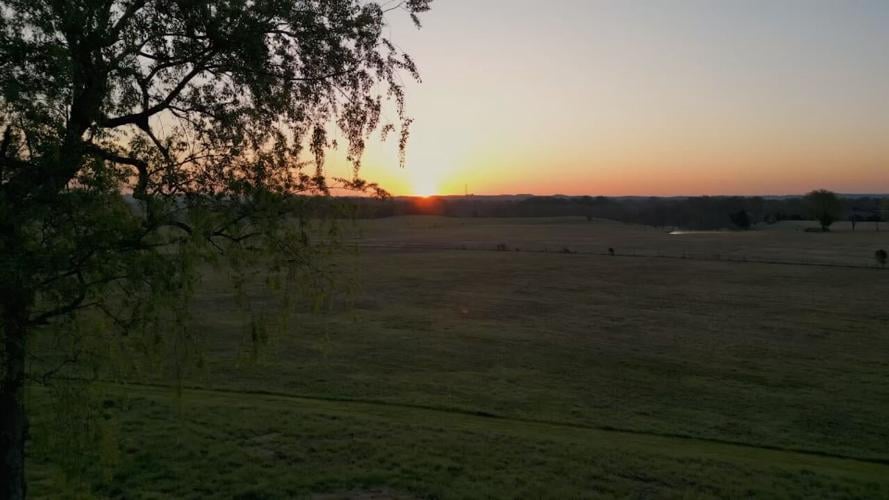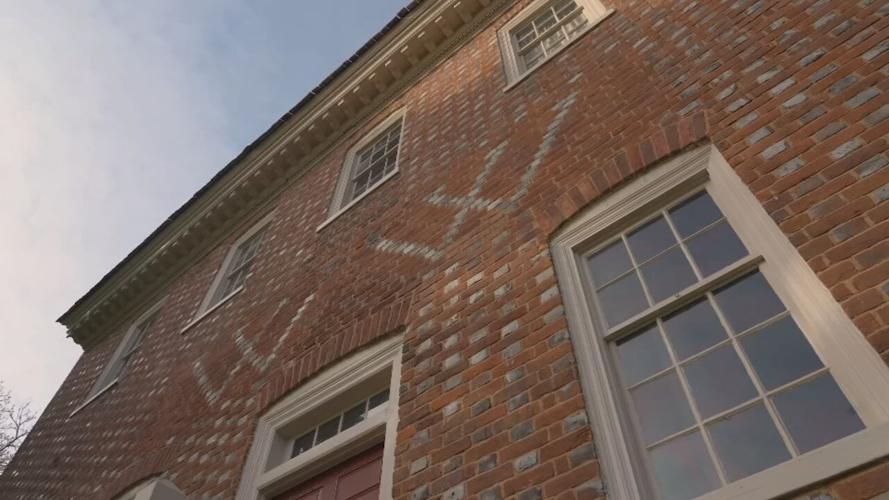STANFORD, Ky. (WDRB) -- Red-winged blackbirds sing songs of spring as light begins to peak over the knolls in a field just 10 miles from Stanford. The grass is covered in a blanket of dew that glistens as the sun paves the way for the first Saturday in May.
The stillness in this field is surreal, especially on a day when peace and quiet are rare in the commonwealth.
About 100 miles away at 1 Central Ave., Churchill Downs is bustling with people. The aroma of whiskey and smoke from fine cigars fill the grandstands as the 149th running of the greatest horse race in the world awaits. The crowd, the atmosphere, the horses and everything in between is loud.
And on Derby Day in Kentucky, that quiet field in Lincoln County shares a deafening tone with Churchill Downs; one with noise, the other with history.
"We know where it all begin," Jane Vanhook said, staring over the field just after sunrise.
The field she's looking at is situated between Stanford and Crab Orchard. It is flat, for the most part, other than a large knob that towers over the surrounding land. It sits directly in front of a brick house with the letters "W W" above the doorway.

In the late 1700s, around the time of the Revolutionary War, William Whitley journeyed from Virginia to the Kentucky frontier. He built the first brick house west of the Alleghenies on the land. (WDRB Photo)
"Everything (Whitley) needed was right here," Vanhook said.
Vanhook is telling the story of William Whitley. In fact, as manager of the William Whitley House Historic Site, that's her job. The brick house and the land that belonged to Whitley is now owned by the county.
"Whitley County, Whitley City and Williamsburg, Kentucky, are all named after him," said Martha Francis, a historic interpreter at the site.
Francis and Vanhook are both products of Lincoln County. They know the importance of carrying on Whitley's legacy. And to understand how that legacy leads to the Kentucky Derby, you must start with what happened in this field.
In the late 1700s, around the time of the Revolutionary War, Whitley journeyed from Virginia to the Kentucky frontier. He came upon a property in Lincoln County, where he and his family would settle.
Whitley built the first brick house west of the Alleghenies on this land, the house Vanhook stands in front of to tell his story.
The home provided defense against the Native Americans, who allied the British.
"They wanted to make sure if there were any Native Americans in the area that they would be able to get to safety," she said.
Whitley had once come across the remains of a friend, William Ray, who'd been scalped in an attack from Native Americans. These attacks, and the war, drove Whitley to hate the British and all the crown stood for.
Despite his reservations, Whitley loved horse racing even though it was a sport popularized in England. Alongside the house, directly in front of the structure, Whitley had a racing track constructed in the field around the knob. It was to be called "Sportsman's Hill."
What Whitley would do in response to his disdain for the British would lead to the create of tradition still known around the world: He raced his horses the other way.
"In 1788, William Whitley had the first circular race track on clay here,” Vanhook said .
"Really, really didn’t like the British — to put it politely — so he raced his horses opposite of the British," Francis added.
On that field in rural Kentucky, Whitley raced his horses counter-clockwise on dirt with the spectators in the middle, everything opposed the British way of horse racing.
The half-mile track at Sportsman's Hill soon drew Americans from across the country.
Vanhook smiles as she describes what the races would've been like, knowing it could also serve as a description of the Kentucky Derby.
"They probably dressed very well at the time, because it was a party and it was also a social event," she said.
Francis laughs at the idea that Whitley's infield full of spectators has evolved into something quite different at Churchill Downs.
"That was the original infield," she said, shaking her head.
The sun is now warming the day over a field where horse racing, as we know it, began. Francis and Vanhook talk of how racing halted at Sportsman's Hill near the time of Whitley's death in the Battle of Thames in 1813. He's rumored to have been the man to kill Tecumseh.
However, racing at Whitley's track influenced the creation of a track down the road in Crab Orchard. There are historical markers at Sportsman's Hill, along the path of where the racetrack once was, that tell the story of the Crab Orchard racing:
"The local racing traditions continued in 1836 when Henry Farris built Spring Hill Race Course on the southeast edge of Crab Orchard south of the city cemetery. The spring and fall racing meets, the mineral waters and the addition of five resort hotels made Crab Orchard the center for racing being referred to as the 'Saratoga of the South'"
While racing later picked back up at Sportsman's Hill, it became second to the race, every spring, in Crab Orchard. The Crab Orchard Derby drew southern, antebellum aristocracy to Lincoln County for the biggest horse race of the year.
"Many of the jockeys that rode in the early (Kentucky) Derbies in Louisville had ridden and trained in the Crab Orchard Springs area," Francis said.
The Crab Orchard Derby was suspended during the Civil War, and, in 1875, a very similar race was held the first time in Louisville and called the Kentucky Derby.
"We lost the racing to Louisville," Vanhook said.
In fact, Col. Jack Chinn, who wrote the Kentucky Racing Regulations and owned 1883 Kentucky Derby winner Leonatus stated, "When the South lost the Civil War it wouldn’t be farfetched to say that it lost the Derby to Louisville. What was the equivalent of the Derby before ... was the Crab Orchard Derby."
The racing may now be in Louisville, but its story began in a field in Lincoln County. Whitley died in 1813, but his racing remains on the biggest stage. His brick house also still stands.
"I think he would be amazed at the crowd that they have at Churchill Downs and the excitement that's around it," Vanhook said.
"I think he would be amazed but I also think he would be very proud," Francis added.
It's not clear what Whitley would think if he could see 1 Central Ave. today, but one could believe he'd be proud of two places rooted in history and honored through tradition.
Copyright 2023 WDRB Media. All Rights Reserved.














